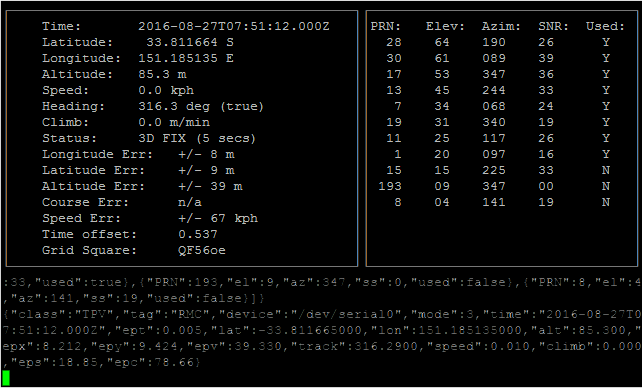Requirements:
- GY-NEO6MV2 GPS (or other GPS module, IO ports are similar)
- Raspberry Pi
- some cables
Before start, be sure that the GPS Module is near a window or better outside, indoor could take more time to get the satellite signal or even not signal at all.
Connections: GPS Module < – > Raspberry Pi
- GND < – > GND
- VCC < – > 5v or 3v3 (depend on your module)
- RX < – > TDX (pin 8)
- TX < – > RXD (pin 10)
Open Raspberry Pi IO ports
- start Raspberry
- open terminal and type raspi-config
- select Interfacing Options
- select Serial
- say NO to ssh over serial
- say YES to serial port hardware
- select OK
- select Finish
- reboot
Get data from the GPS module
- start raspberry
- open terminal and type sudo apt-get install gpsd gpsd-clients
- type cat /dev/serial0
- you should get a cyclic NMEA sentences output like the following:
$GPRMC,235316.000,A,4003.9040,N,10512.5792,W,0.09,144.75,141112,,*19
$GPGGA,235317.000,4003.9039,N,10512.5793,W,1,08,1.6,1577.9,M,-20.7,M,,0000*5F
$GPGSA,A,3,22,18,21,06,03,09,24,15,,,,,2.5,1.6,1.9*3E
Now you can start to install Navit or use the gpsd daemon to test the received data:
- on the terminal type sudo gpsd /dev/serial0 -F var/run/gpsd.sock
- sudo gpsd -s
- sudo gpsmon
You should get a more readable output, something like:
